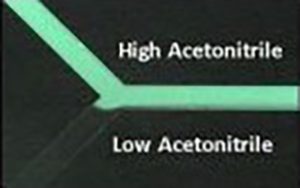Gradient Elution Microchannel Electrochromatography
Controlling On-Chip Gradient Elution Microchannel Electrochromatography Using the LabSmith HVS448Michael W.L. Watson et al July 4, 2012
Separations of complex peptide mixtures can take too long to elute without the ability to apply a solvent gradient.
One solution for applying a gradient is called Microchannel Electrochromatography, or MEC. In reversed phase MEC buffers with aqueous and organic components comprise the mobile phase of a separation through a solid and porous stationary phase localized in a microfluidic device. MEC requires precise and automated control of three important experimental parameters:
- At least two applied electric field gradients
- Timing and control of the sample injection/switch to sample elution
- The electroosmotic flow (EOF) velocity during buffer gradient formation.
The LabSmith HVS448 High Voltage Sequencer is the only solution on the market capable of the precise, accurate voltage control and timing required for on-chip MEC. With the HVS448 in their toolkit, Professor Aaron Wheeler and Ph.D. students Michael Watson and Jared Mudrick of The University of Toronto could focus on a solution to the third critical problem of implementing MEC: control of the EOF velocity.
Described below is a guide to implementing their velocity-matched buffer approach to the on-chip gradient MEC elution of a protein digest using the HVS448, first published in Analytical Chemistry (Anal.Chem., 2009, 81, 3851-3857).
Application: Electrochromatography

